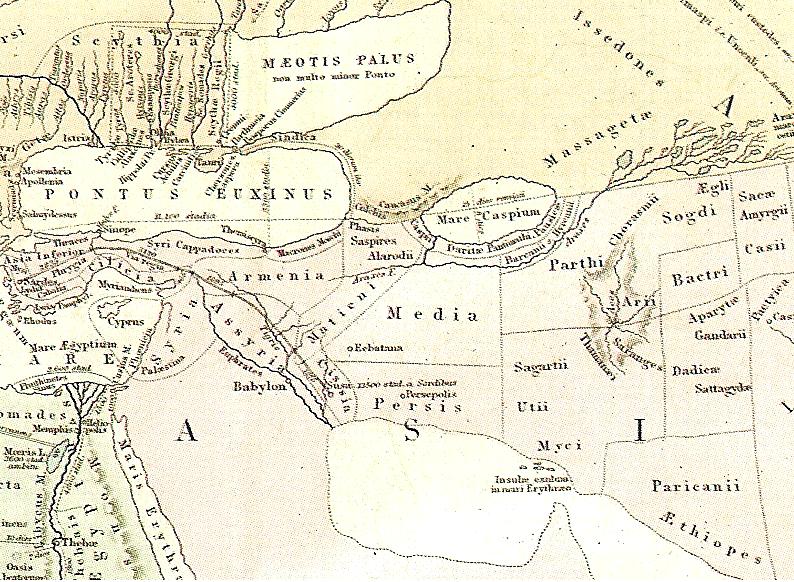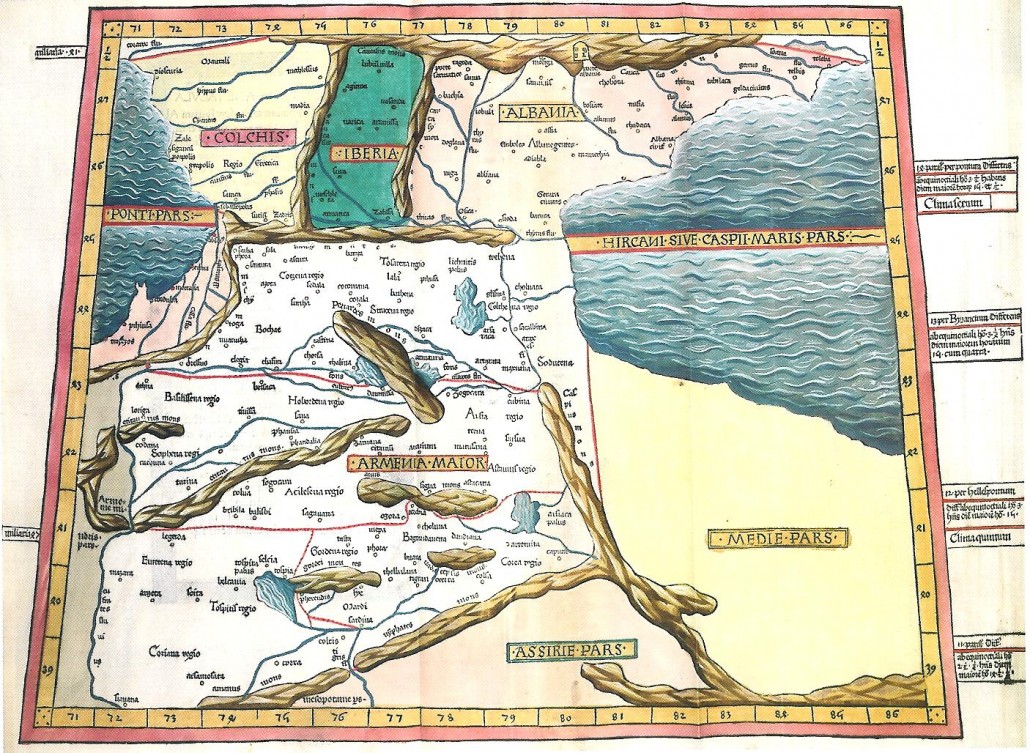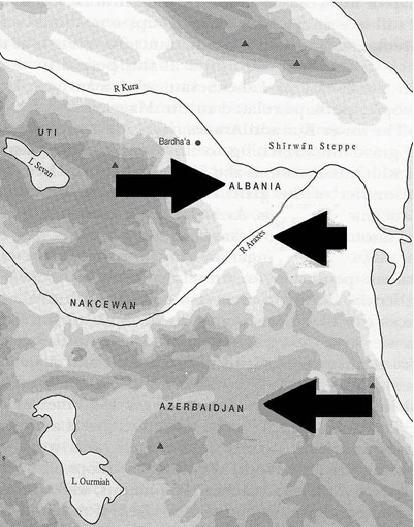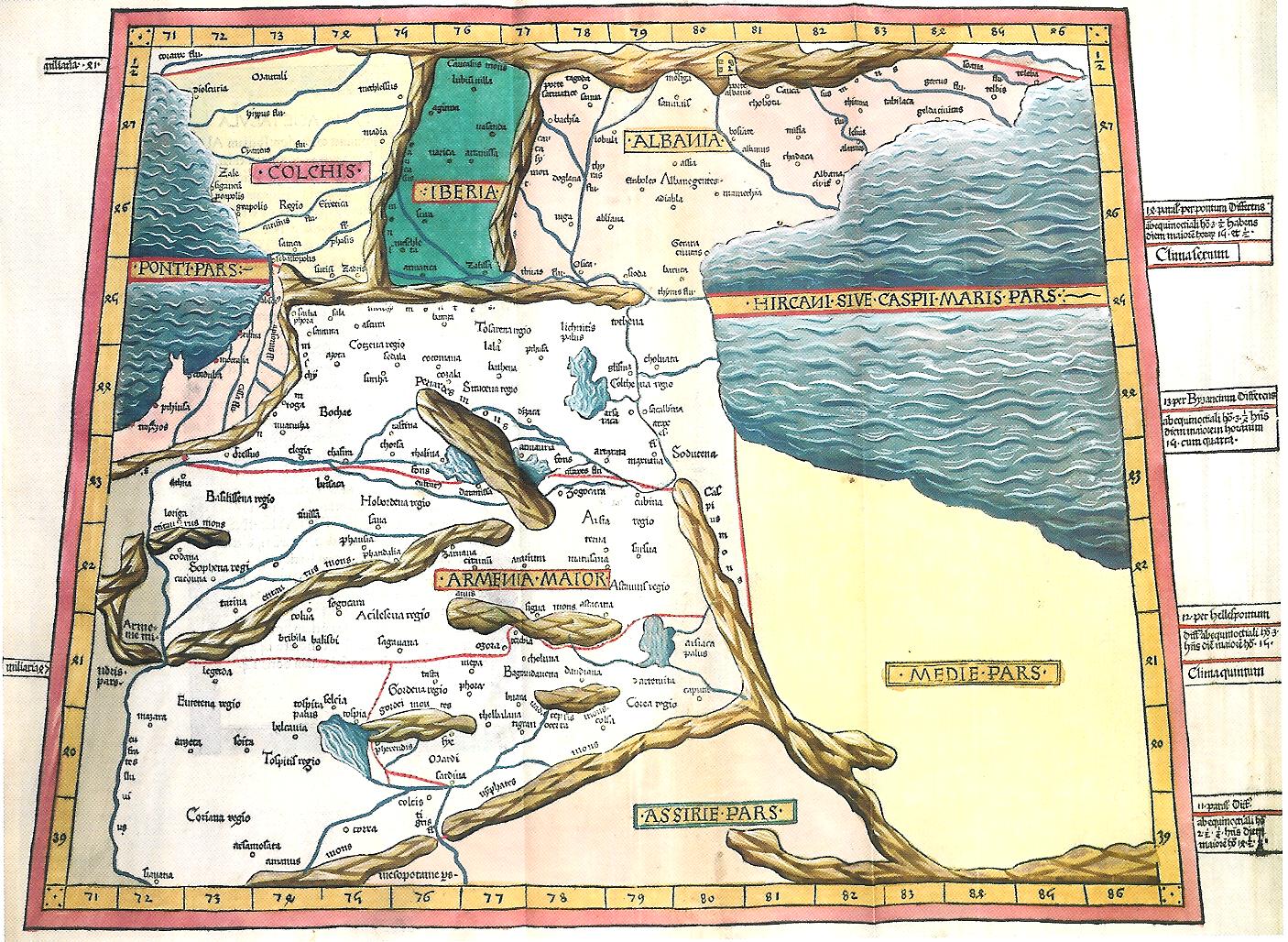The article below on Atropates by M. L. Chaumont was originally published on December 15, 1987 and last updated on August 17, 2011. Chaumont’s article is also available in print (Vol. III, Fasc. 1, pp. 17-18).
Kindly note that the maps and accompanying descriptions for these do not appear in the original Encyclopedia Iranica article.
================================================================
Atropates (Āturpāt, lit., “protected by the fire,” cf. Av. Atərəpāta), the satrap of Media, commander of the troops from Media, Albania, and Sacasene at the battle of Gaugamela in 331 B.C. (Arrian, Anabasis 3.8.4). He remained faithful to Darius III until the latter’s death in 330, after which he went over to the Macedonian camp. Alexander, when passing through Ecbatana (Hamadān) earlier in the same year, had already transferred the governorship of Media to Oxydates (ibid., 3.20.3; Quintus Curtius, Historiae 6.2.11); but in 328-27 B.C. Alexander dismissed Oxydates, whose loyalty he no longer trusted, and reinstated Atropates (Arrian, 4.18.3; Quintus Curtius, 8.3.17, where Atropates is erroneously named Arsaces). As satrap of Media, Atropates delivered Baryaxes, a defeated rebel from that province, to Alexander at Pasargadae in 325-324 (Arrian, 6.29.3). He rose so high in the conqueror’s esteem that his daughter was soon afterward married to Alexander’s confidant Perdiccas (Arrian, 7.4.5; Justin, Historiae 13.4.13). He had a last interview with Alexander in Media in 324-323 (Arrian, 7.13.2, 6).
 Close –up of the Achaemenid Empire region, the Caucasus and Central Asia on Charles Muller’s reconstruction of the world according to Herodotus (484-425 BCE); Note that Media, Armenia and the Caucasus regions are shown as distinct regions (Source: Source: Galichian, R., 2010, The Invention of History: Azerbaijan, Armenia and the Showcasing of Imagination, London, England: Gomitas Institute & Yerevan, Armenia: PrintInfo Art Books, p.163). At this time Media Atropatene had not been formed as Alexander had yet to invade the Achaemenid Empire. Media, Media Atropatene and the later post-Islamic historical designation for northwest Iran “Azerbaijan” was never located in the southern Caucasus, notably modern day Republic of Azerbaijan (founded in May 1918).
Close –up of the Achaemenid Empire region, the Caucasus and Central Asia on Charles Muller’s reconstruction of the world according to Herodotus (484-425 BCE); Note that Media, Armenia and the Caucasus regions are shown as distinct regions (Source: Source: Galichian, R., 2010, The Invention of History: Azerbaijan, Armenia and the Showcasing of Imagination, London, England: Gomitas Institute & Yerevan, Armenia: PrintInfo Art Books, p.163). At this time Media Atropatene had not been formed as Alexander had yet to invade the Achaemenid Empire. Media, Media Atropatene and the later post-Islamic historical designation for northwest Iran “Azerbaijan” was never located in the southern Caucasus, notably modern day Republic of Azerbaijan (founded in May 1918).
Under the territorial dispensation arranged at Babylon after Alexander’s death in 323, the satrapy of Media was divided into two parts, of which only Little Media (the northwestern part) was left to Atropates while Great Media (the eastern part) was assigned to Pytho (Diodorus Siculus, 18.3.3; Justin, 13.4.13). Eventually Atropates refused allegiance to any of the Macedonian generals and made his satrapy an independent kingdom (Strabo, Geography 11.13.1).
 Ptolemy’s (c. 90-168 CE) map of the southern Caucasus during the Parthian era; from Ptolemy’s Tabula III Asiae of the Geographia printed in Ulm in 1482 (Source: Galichian, R., 2010, The Invention of History: Azerbaijan, Armenia and the Showcasing of Imagination, London, England: Gomitas Institute & Yerevan, Armenia: PrintInfo Art Books, p.19, Figure 1). Note that the region of modern-day Republic of Azerbaijan in the southern Caucasus was known as Albania; the historical Azerbaijan. This southern Caucasian region was never known as Media in antiquity nor was it known as “Azerbaijan” in the later post-Islamic era.
Ptolemy’s (c. 90-168 CE) map of the southern Caucasus during the Parthian era; from Ptolemy’s Tabula III Asiae of the Geographia printed in Ulm in 1482 (Source: Galichian, R., 2010, The Invention of History: Azerbaijan, Armenia and the Showcasing of Imagination, London, England: Gomitas Institute & Yerevan, Armenia: PrintInfo Art Books, p.19, Figure 1). Note that the region of modern-day Republic of Azerbaijan in the southern Caucasus was known as Albania; the historical Azerbaijan. This southern Caucasian region was never known as Media in antiquity nor was it known as “Azerbaijan” in the later post-Islamic era.
Thereafter this part of Media was known to the Greeks as Media Atropatene or simply Atropatene, like Parthian and Middle Persian Āturpātakān (whence Armenian Atrpatakan), later Ādurbādagān, NPers. Āḏarbāyjān.
Atropates founded a dynasty which was to rule in Atropatene for several centuries (cf. Strabo, 11.13.1). Bibliography Sources: Arrian, Anabasis. Diodorus Siculus, BibliothecaHistorica, bk. 18. Strabo,Geography, bk. 11. Modern authors: H. Berve, Alexanderreich II, 1926, no.180. A. von Gutschmid, Geschichte Irans und seiner Nachbarländer, Tübingen, 1888. Justi, Namenbuch, p. 49. J. Kaerst, “Atropates,” in Pauly-Wissowa, II/2, col. 2150. Th. Nöldeke, “Atropatene,” ZDMG 34, 1880, pp. 692f. On the name see M. Mayrhofer, Iranisches Personennamenbuch I/1, Vienna, 1977, p. I/29 no. 70.




